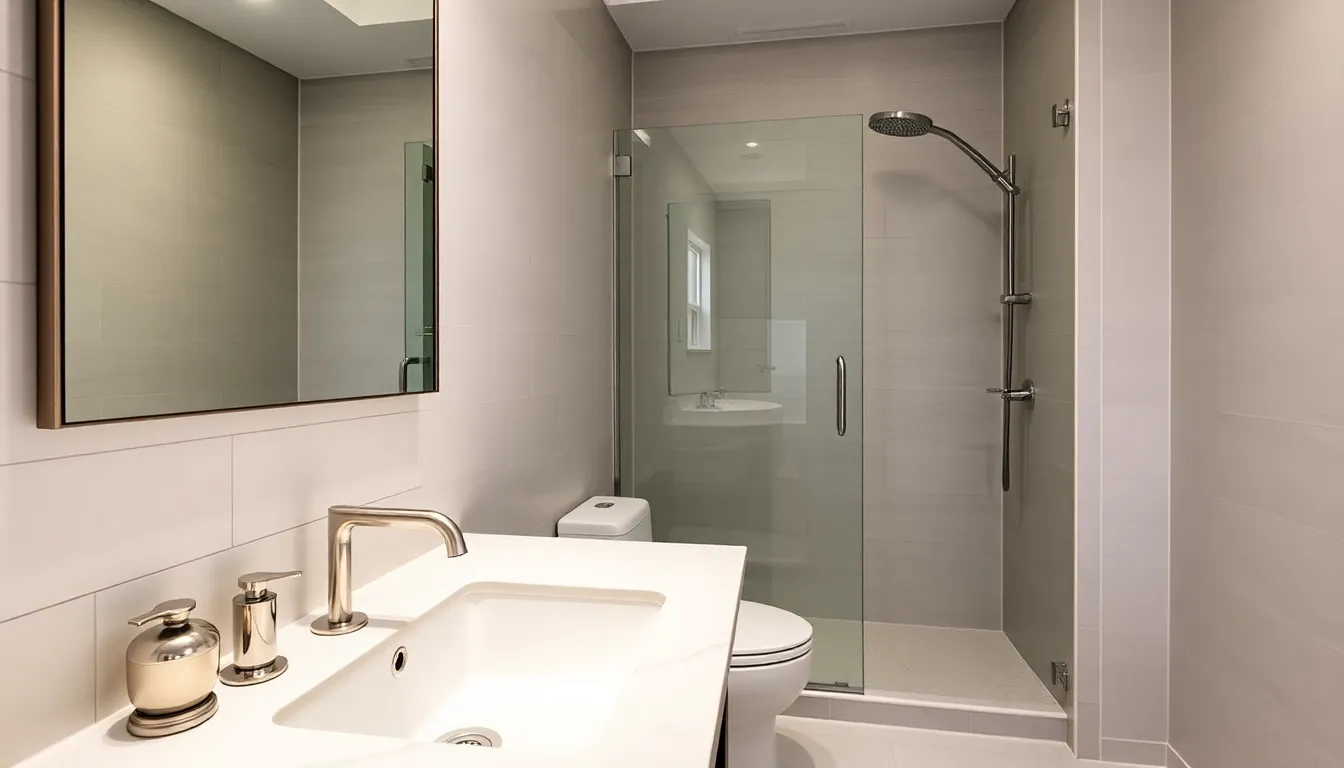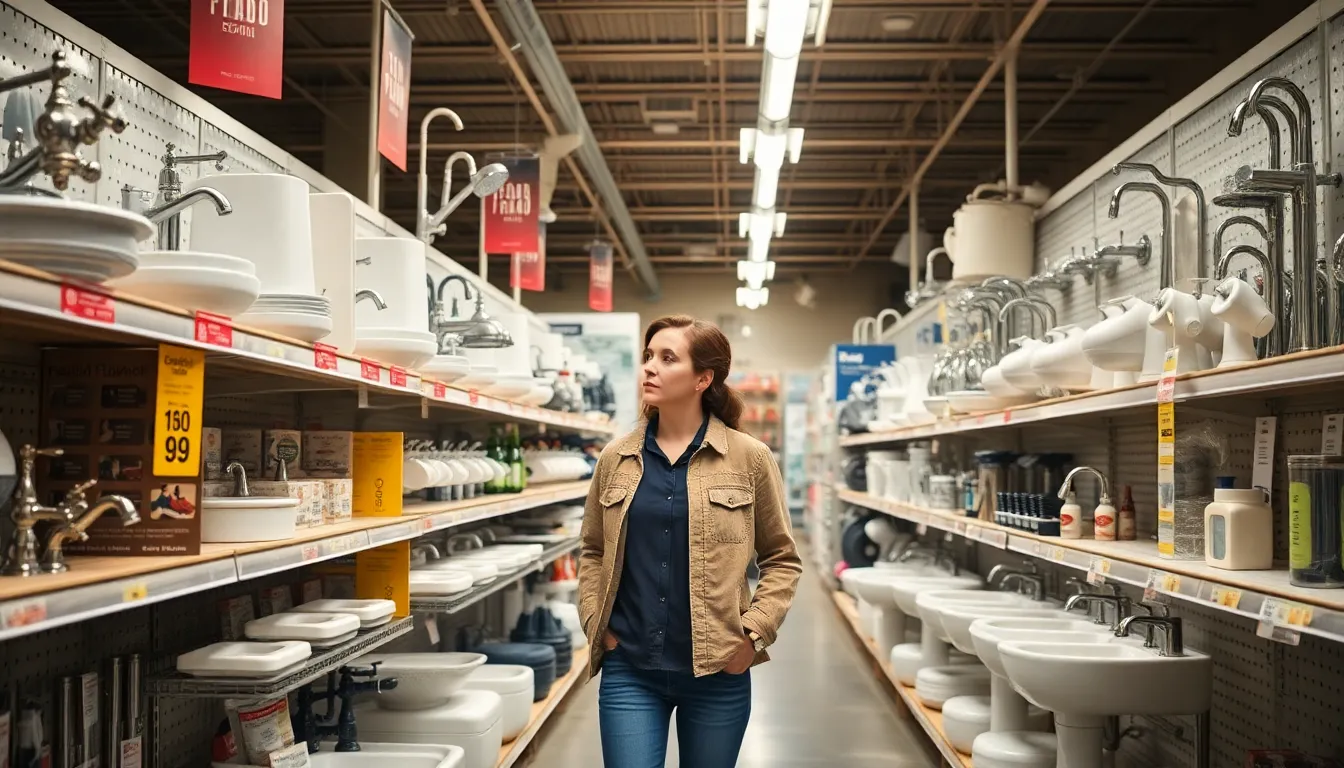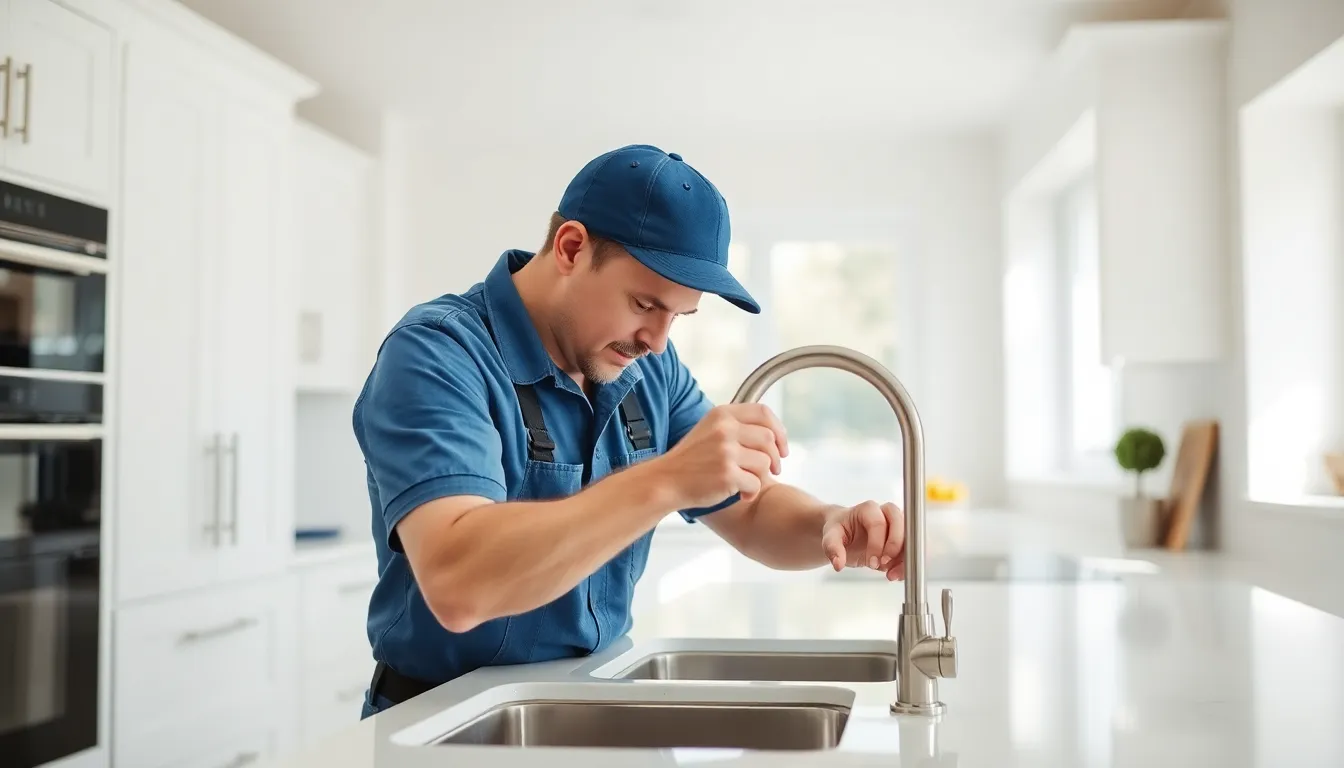Stepping into a freshly remodeled bathroom where every detail, from the faucet to the showerhead, harmoniously blends style and function is possible. Choosing the right plumbing fixtures can transform a mundane space into a stunning oasis. With countless options available, homeowners often feel overwhelmed by the choices, from sleek modern designs to classic vintage styles.
Selecting fixtures isn’t just about aesthetics; it’s about ensuring durability and efficiency. The right choices can enhance water conservation and elevate the overall experience of your home. This article will guide you through the essential factors to consider, helping you navigate the sea of options and make informed decisions that reflect your personal taste and lifestyle. Dive in to discover how to marry beauty with practicality in your next remodel.
Understanding Your Needs
Selecting the right plumbing fixtures begins with understanding personal needs and preferences. Proper assessment of space and style sets the foundation for effective choices.
Assessing Your Space
Assessing the available space helps determine the types and sizes of fixtures that work best. Consider the dimensions and layout of the area, ensuring each fixture complements the overall design. Measure existing plumbing locations to avoid complications during installation. Also, think about the functionality each area requires, such as a shower versus a bathtub in a bathroom remodel. Establishing a practical use case leads to making informed fixture selections that enhance both appearance and utility.
Identifying Your Style
Identifying personal style significantly impacts fixture selection. Explore various styles, from modern minimalism to classic elegance, and find inspiration in current trends or timeless designs. Choose fixtures that resonate with the existing decor while maintaining a cohesive aesthetic. Ensure compatibility with other elements in the remodel, such as countertops or cabinetry. Opting for fixtures that reflect personal taste enhances enjoyment and satisfaction in the completed space.
Types of Plumbing Fixtures

Choosing the right plumbing fixtures significantly impacts both functionality and style in a remodel. Understanding the various types of fixtures available helps homeowners make informed decisions.
Sinks and Faucets
Sinks and faucets serve as focal points in bathrooms and kitchens. Homeowners can select from a variety of sink types, such as undermount, drop-in, and pedestal. Each type offers unique aesthetic and functional benefits. Choosing a faucet involves considering features like water efficiency, handle style, and finish. Popular finishes include chrome, brushed nickel, and matte black. Opt for fixtures that complement existing decor and performance needs.
Showers and Tubs
Showers and tubs offer essential comfort and relaxation. Options include stand-alone tubs, built-in tubs, and walk-in showers. Homeowners should consider the size of their space and select fixtures that fit comfortably without crowding. Shower heads come in a range of styles, including handheld, rain shower, and multi-function models. Prioritize water-saving options that provide an enjoyable experience while being eco-friendly.
Toilets and Bidets
Toilets and bidets contribute to bathroom convenience and hygiene. Homeowners often opt for low-flow toilets for water conservation, while bidets enhance personal cleanliness. Look for models that combine efficiency with comfort, such as height-adjustable toilets. Styles range from traditional to modern and can include specialized features like heated seats and built-in bidets. Ensure that chosen fixtures match the overall design aesthetic while providing the necessary functionality.
Materials and Finishes
Choosing the right materials and finishes for plumbing fixtures significantly impacts both durability and aesthetics. Understanding common materials and popular finishes helps ensure selections stand the test of time while enhancing the overall design.
Common Materials
- Stainless Steel: Stainless steel offers high resistance to corrosion and staining, making it ideal for sinks and faucets. Its modern appearance fits a range of styles.
- Bronze: Bronze fixtures offer a classic look with durability, particularly in high-traffic areas. It develops a unique patina over time, adding character.
- Plastic: Plastic fixtures are lightweight and affordable, perfect for budget-friendly renovations. However, they may not provide the same longevity as metal options.
- Porcelain: Porcelain is commonly used for sinks and toilets, showcasing a timeless elegance. Its smooth surface makes it easy to clean, though it can chip if mishandled.
- Copper: Copper offers a unique aesthetic with its warm tones and antibacterial properties. This material is typically used in pipes and specialized fixtures.
Popular Finishes
- Polished Chrome: This finish is widely popular for its sleek, reflective surface that complements modern aesthetics. It resists fingerprints and water spots effectively.
- Brushed Nickel: Brushed nickel provides a softer, muted look that hides imperfections and fingerprints. It’s versatile, fitting both traditional and contemporary designs.
- Oil-Rubbed Bronze: Oil-rubbed bronze delivers a vintage feel with a rich, dark finish. This finish darkens with use, creating a unique look over time.
- Matte Black: Matte black fixtures create a bold statement and contrast beautifully with lighter cabinetry. They resist fingerprints, making maintenance easier.
- Polished Brass: Polished brass adds a luxurious touch with its warm, shiny finish. Regular maintenance is necessary to prevent tarnishing.
Selecting the right materials and finishes enhances the beauty and functionality of plumbing fixtures, ensuring they meet daily demands while contributing to the overall design theme.
Budgeting for Plumbing Fixtures

Budgeting for plumbing fixtures effectively ensures that homeowners choose quality options without overspending. Allocating a specific amount for fixtures contributes to a smooth remodeling process while avoiding unexpected financial strain.
Setting a Realistic Budget
Setting a realistic budget involves determining overall project costs first. Consider the entire remodel scope, including labor, materials, and additional features. Plumbing fixtures typically account for 15% to 20% of the overall remodel budget. Research prices for various fixture types like faucets, sinks, and toilets to get a clearer idea of potential spending.
Use online resources, budget calculators, or consult with professionals to gauge specific costs. Include a contingency fund of around 10% to manage unforeseen expenses during the remodeling project.
Cost-Effective Options
Cost-effective options provide functional solutions without sacrificing quality. Prioritizing essential features ensures that every dollar spent benefits the overall project. Here are several strategies:
- Shop Sales: Take advantage of seasonal sales or clearance events from local hardware stores and plumbing suppliers.
- Consider Trade Brands: Evaluate reputable trade brands that offer durable fixtures at lower prices than high-end designer brands.
- Select Multi-Functional Fixtures: Choose fixtures that serve multiple purposes, like showerheads with adjustable settings, for added value.
- Emphasize Energy Efficiency: Invest in eco-friendly fixtures that reduce water consumption, leading to lower utility bills.
- Explore Online Retailers: Look at various online retailers for competitive pricing, customer reviews, and possible discounts.
By taking these steps, homeowners can achieve their desired aesthetics and functionality while maintaining a reasonable budget.
Installation Considerations

Considering installation aspects is crucial when choosing plumbing fixtures for a remodel. Proper planning ensures a seamless process and long-term satisfaction with the selected fixtures.
DIY vs. Professional Help
DIY installations can save costs, but they require plumbing knowledge and experience. Simple tasks like faucet replacement or drain cleaning offer manageable challenges for skilled homeowners. For complex installations, especially involving water lines or gas connections, professional help provides assurance. Plumbing professionals possess the expertise to handle unexpected issues and ensure compliance with local codes. Selecting Integrity Services & Plumbing guarantees access to experienced technicians proficient in installations, ensuring reliable performance.
Ensuring Proper Compatibility
Ensuring compatibility of fixtures with existing plumbing systems is vital. Accurate measurements prevent mismatched sizes that can lead to leaks or operational inefficiencies. Check specifications for connections, such as standard pipe sizes and fitting types, to facilitate proper installation. Verify that new fixtures meet water pressure requirements and flow rates expected in the household. Using quality plumbing service from professionals, like those at Integrity Services & Plumbing, streamlines the compatibility process, allowing homeowners to enjoy their remodel without installation complications.
Conclusion
Choosing the right plumbing fixtures can significantly impact the success of a bathroom remodel. By carefully considering personal needs and preferences homeowners can create a space that’s both functional and visually appealing. It’s essential to assess the available space and understand the various fixture types and materials to ensure a cohesive design.
Budgeting wisely allows for flexibility while still achieving desired aesthetics. Proper planning for installation is crucial to avoid complications down the line. By following these guidelines homeowners can confidently select plumbing fixtures that enhance their bathroom’s beauty and utility, resulting in a satisfying and long-lasting remodel.
Frequently Asked Questions
What are the key considerations when choosing plumbing fixtures for a bathroom remodel?
When selecting plumbing fixtures, consider your personal needs, space dimensions, style preferences, and the overall design. Ensuring that fixtures are both aesthetically pleasing and functional is crucial for a successful remodel.
How do I measure space for plumbing fixtures?
Accurate measurements of your bathroom layout and existing plumbing locations are essential. Measure the length, width, and height of the space to ensure the fixtures you choose will fit comfortably and work effectively within the available area.
What types of plumbing fixtures are available for bathrooms?
Common plumbing fixtures include sinks, faucets, showers, tubs, toilets, and bidets. Each type has various styles and features that influence both functionality and aesthetic appeal, so explore options that align with your design vision.
How do materials and finishes impact plumbing fixtures?
Materials affect durability and maintenance while finishes enhance aesthetic appeal. Popular materials include stainless steel and porcelain, while finishes like polished chrome or matte black can dramatically change the look of your fixtures.
How should I budget for plumbing fixtures during a remodel?
Allocate 15% to 20% of your total renovation budget for plumbing fixtures. Research prices, plan for a contingency fund, and consider cost-effective alternatives to manage expenses without sacrificing quality or style.
Should I install plumbing fixtures myself or hire a professional?
While DIY installation can save money, it requires plumbing knowledge. Hiring a professional can ensure proper installation and compatibility with existing systems, reducing the risk of leaks or operational issues.
What are the benefits of choosing eco-friendly plumbing fixtures?
Eco-friendly fixtures, such as low-flow toilets and water-efficient showerheads, conserve water and reduce utility bills. They also contribute to environmental sustainability while still providing comfort and functionality in your bathroom.
Can I find budget-friendly plumbing fixtures that still look stylish?
Yes, many budget-friendly options exist. Look for sales, consider multi-functional fixtures, and explore online retailers or trade brands. Quality and aesthetic appeal can often be achieved without overspending.

